Last Updated on 3 months by Francis
When it comes to upper body strength training, the incline barbell bench press and incline dumbbell press are two popular exercises that target the upper chest and shoulders. While they may appear similar at first glance, there are important differences to consider. Understanding these differences can help you choose the exercise that best suits your goals and preferences.
Contents
Key Takeaways
- The incline barbell bench press offers more stability, allowing you to lift heavier weights.
- The incline dumbbell press allows for more unilateral movement and a greater range of motion.
- The incline dumbbell press targets the upper chest more directly, while the barbell press engages the shoulders and chest simultaneously.
- Both exercises promote upper body strength and muscle growth.
- Your choice between the two exercises depends on your individual goals and abilities.
Incline Dumbbell Press Basics
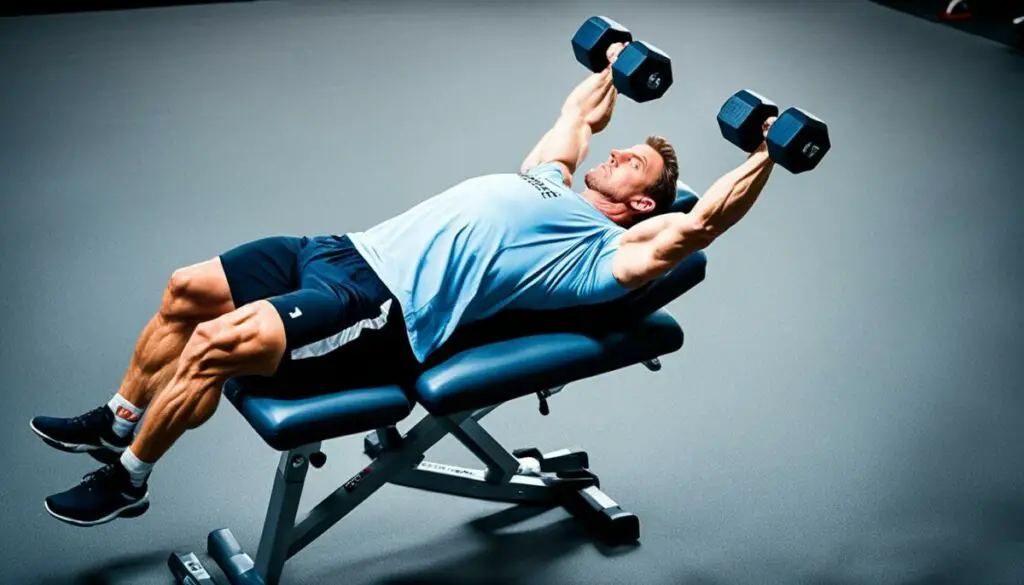
The incline dumbbell press is a bench press exercise performed with a set of dumbbells. It primarily targets the pectoralis major, or upper chest muscle, but also engages the posterior deltoids, triceps, and anterior deltoids to a lesser extent. It allows for more flexibility in adjusting the bench incline to target the chest muscles more effectively. The exercise involves lifting the dumbbells to chest height, lowering them towards the chest, and pressing them in front of the chest until the arms are straight.
When performing the incline dumbbell press, it’s important to maintain proper form to maximize effectiveness and reduce the risk of injury. Here are the steps to perform the exercise correctly:
- Set an adjustable bench at a 30-45 degree angle.
- Sit or lie on the bench, holding a dumbbell in each hand with an overhand grip.
- Position the dumbbells at chest height, elbows bent and palms facing forward.
- Engage your core and press the dumbbells straight up, extending your arms fully.
- Lower the dumbbells back down to chest level, maintaining control.
- Repeat for the desired number of reps.
The incline dumbbell press is a versatile exercise that can be modified to target different areas of the chest. Adjusting the incline angle can shift the focus to the upper or lower chest. By using dumbbells, each arm works independently, promoting balance and stability. This exercise can be incorporated into a chest workout routine or as part of a full-body strength training program.
Incline Barbell Bench Press Basics
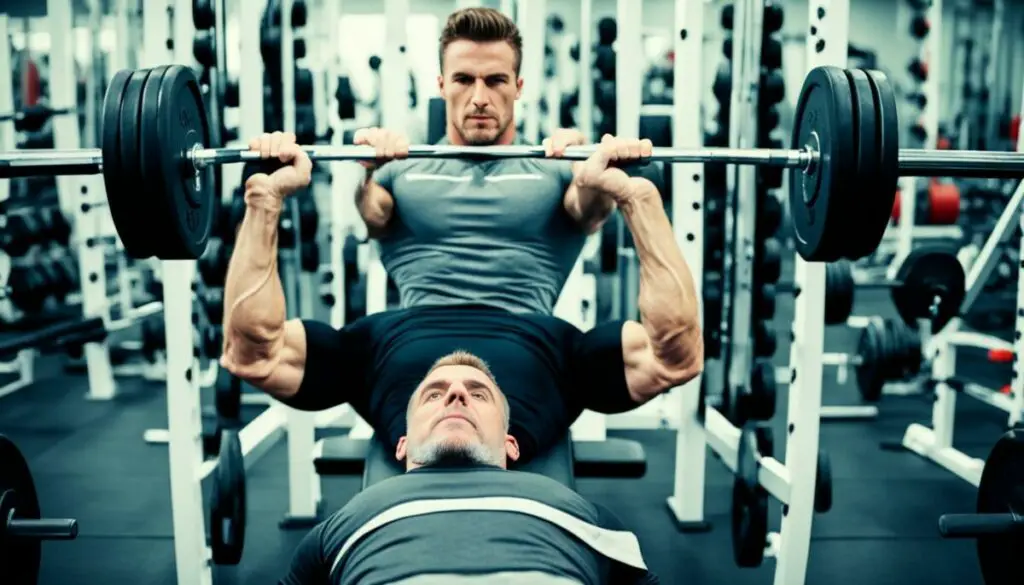
The incline barbell bench press is a fundamental exercise that targets the pectoralis major muscles, along with the anterior deltoids, triceps, and posterior deltoids. This compound movement involves using a barbell to press the weight in an inclined position, providing a great stimulus for upper body strength and muscle development.
To perform the incline barbell bench press:
- Begin by setting up an incline bench at an angle of around 30-45 degrees. This angle targets the upper chest muscles and shoulders.
- Lie back on the bench and position yourself with your feet firmly on the ground, creating a stable base.
- Grab the barbell with an overhand grip, slightly wider than shoulder-width apart. Make sure your wrists are straight and aligned with your forearms.
- Unrack the barbell and lower it towards your upper chest in a controlled manner, keeping your elbows angled slightly outwards.
- Pause for a brief moment with the barbell lightly touching your chest.
- Push the barbell back up to the starting position, fully extending your arms without locking out your elbows.
- Repeat the movement for the desired number of repetitions.
The incline barbell bench press provides more stability compared to the dumbbell press due to the use of a barbell and the need to rack and unrack the weight. This exercise allows you to lift heavier loads, promoting strength gains and muscle growth. It is an excellent choice for individuals looking to develop overall upper body strength and enhance chest and shoulder aesthetics.
| Incline Barbell Bench Press | Incline Dumbbell Press |
|---|---|
| Stability provided by the barbell | Unilateral movement for greater range of motion |
| Allows for heavier weights | Provides core and stabilizer muscle activation due to instability |
| Targets pectoralis major, anterior deltoids, triceps, and posterior deltoids | Emphasizes pectoralis major with secondary involvement of other muscles |
| Utilizes a barbell with a fixed grip position | Uses dumbbells that allow independent movement |
By incorporating the incline barbell bench press into your workout routine, you can effectively target and strengthen key upper body muscles, leading to improved strength, muscle definition, and overall upper body aesthetics.
Benefits of Incline Dumbbell Press
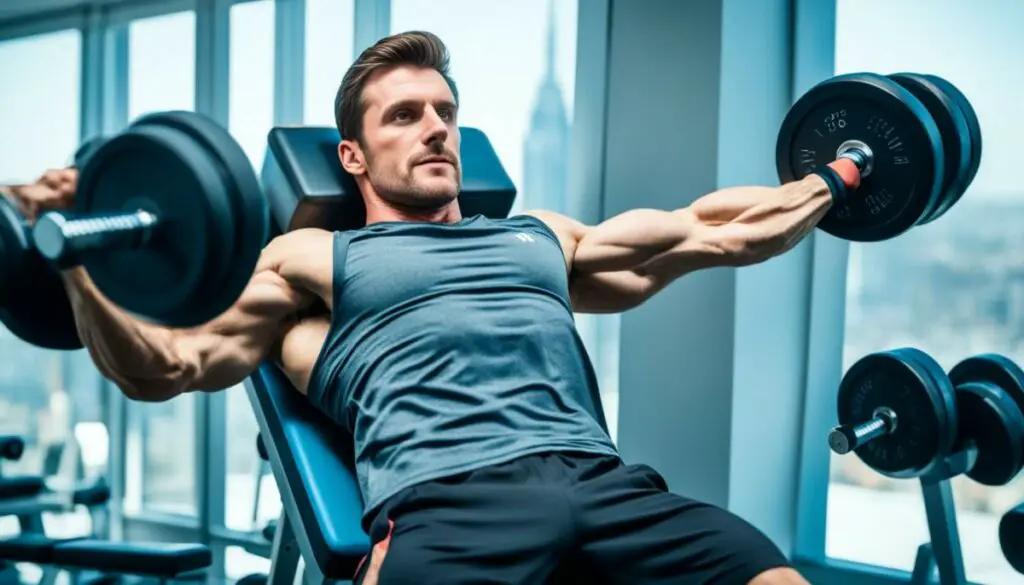
The incline dumbbell press offers several benefits that make it an effective exercise for targeting the chest muscles and promoting overall upper body strength.
1. Increased Muscle Activation: The incline dumbbell press focuses more directly on the pecs, particularly the upper chest. This exercise allows for greater muscle activation in the target area, leading to enhanced chest development and definition.
2. Functional Movement: Unlike the barbell press, the incline dumbbell press allows each arm to work independently. This promotes a more functional movement pattern and engages the core and stabilizer muscles to a greater extent. It also helps to correct any muscle imbalances that may exist between the left and right sides of the body.
3. Greater Range of Motion: The dumbbell version of the incline press allows for a greater range of motion compared to the barbell variation. This provides a deeper stretch and contraction of the chest muscles, leading to improved muscle fiber recruitment and overall growth.
4. Balance and Symmetry: By lifting and pressing the dumbbells individually, the incline dumbbell press promotes muscular balance and symmetry. It ensures that each side of the body works equally, preventing one side from compensating for the other. This not only enhances aesthetics but also reduces the risk of injury.
5. Core Engagement: Due to the unstable nature of holding and controlling the dumbbells separately, the incline dumbbell press engages the core muscles to a greater degree. This helps to strengthen the core and improve overall stability, contributing to better performance in other compound exercises.
6. Versatility: The incline dumbbell press offers versatility in terms of the weights used. It allows for incremental weight increases by simply choosing heavier dumbbells, making it suitable for individuals of varying fitness levels. It is also a useful exercise for those with limited access to barbells or gym equipment.
7. Variation and Progression: The incline dumbbell press can be easily modified and progressed by altering the grip, tempo, or angle of the bench. This helps to prevent plateaus and ensures continued muscle growth and strength gains over time.
Incorporating the incline dumbbell press into your chest workout routine can provide a well-rounded approach to chest development, targeting the upper chest and promoting overall upper body strength and stability.
Benefits of Incline Barbell Bench Press
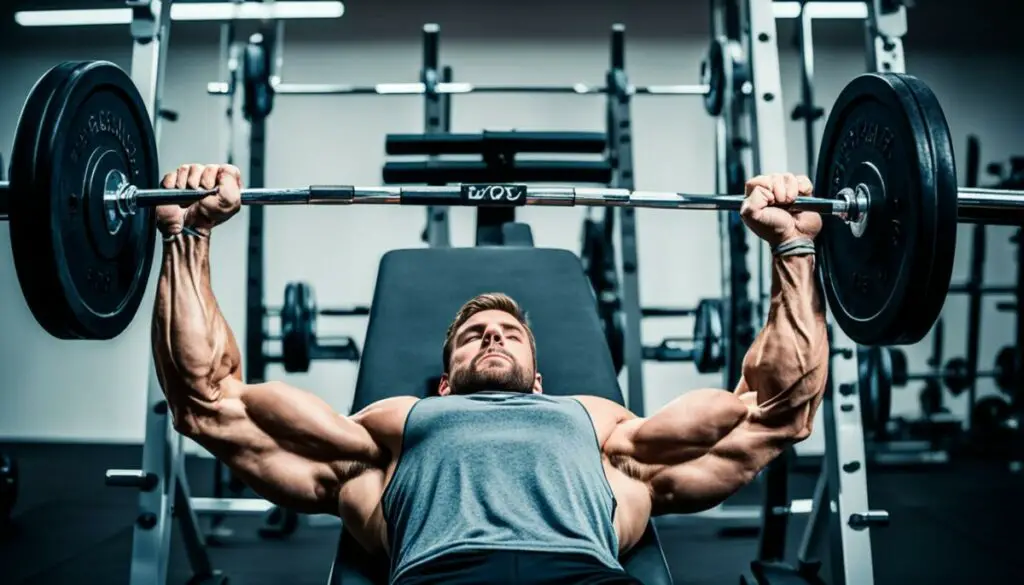
The incline barbell bench press provides several benefits that contribute to upper body strength, muscle development, and overall fitness.
- Ability to Lift Heavier Weights: The incline barbell bench press allows for lifting heavier weights compared to the incline dumbbell press. This enables greater strength gains in the upper body over time.
- Targets Chest and Shoulders: This exercise primarily targets the upper portion of the pectoralis major, effectively developing the chest muscles. Additionally, it engages the shoulder complex, contributing to well-rounded shoulder development.
- Great for Heavy Lifting: The incline barbell bench press is ideal for heavy lifting enthusiasts. Its stable setup and ability to load weight plates make it suitable for progressive overload, leading to increased muscle mass and strength.
- Develops Upper Body Strength and Stability: By engaging the chest, shoulders, and triceps, the incline barbell bench press helps develop overall upper body strength. It also improves stability, as the exercise requires balance and control throughout the movement.
Incorporating the incline barbell bench press into your chest workout routine can enhance muscle development, promote strength gains, and contribute to a well-balanced upper body.
Sample Table: Comparison of Incline Barbell Bench Press and Incline Dumbbell Press
| Benefits | Incline Barbell Bench Press | Incline Dumbbell Press |
|---|---|---|
| Ability to Lift Heavier Weights | ✓ | ✕ |
| Range of Motion | Restricted by the barbell | Greater range of motion |
| Unilateral Movement | ✕ | ✓ |
| Muscle Activation in Upper Chest | ✓ | ✕ |
| Stability | More stable with barbell | Less stable with dumbbells |
Drawbacks of Incline Dumbbell Press
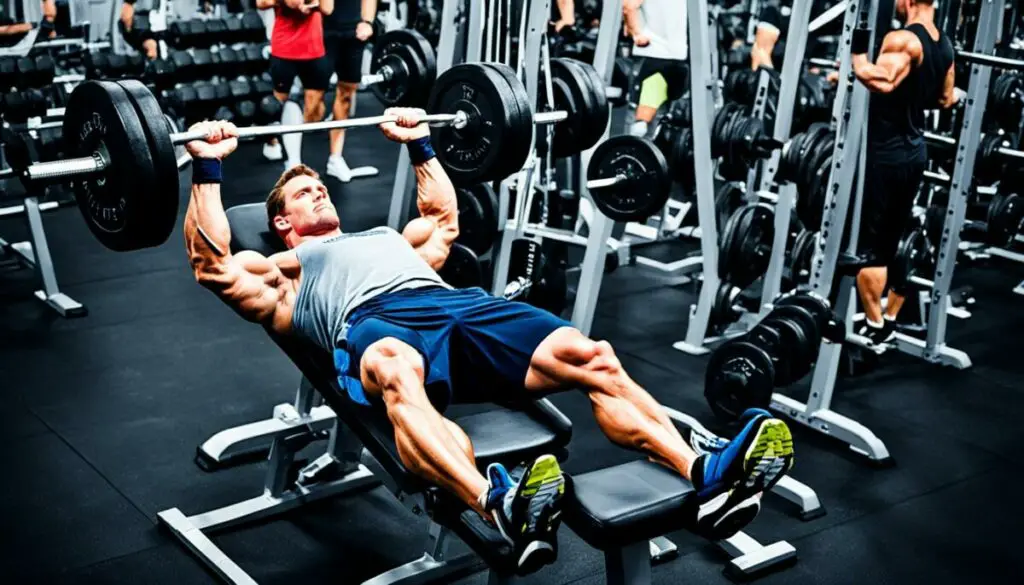
The incline dumbbell press, while effective for targeting the upper chest and shoulders, has a few drawbacks to consider:
1. Difficulty in Setup
Compared to the barbell press, setting up for incline dumbbell press can be more challenging. Getting the dumbbells into position requires proper coordination and can be tricky, especially when handling heavier weights.
2. Varied Dumbbell Weights
In order to continue progressing in weight, a wide variety of dumbbells is necessary. This can be problematic for individuals who exercise at home with limited space and resources. Investing in a range of dumbbells may not be feasible or practical for everyone.
3. Risk of Overtraining
Overtraining the same muscle group two consecutive days can increase the risk of injuries and hinder progress. Proper rest and recovery are essential for allowing the muscles to repair and grow. It’s important to incorporate sufficient rest days into your training routine to avoid overexertion.
Despite these drawbacks, the incline dumbbell press remains a valuable exercise for developing the upper chest and shoulders. It offers an effective way to target these specific muscle groups and can be modified to suit individual fitness levels and goals.
Drawbacks of Incline Barbell Bench Press
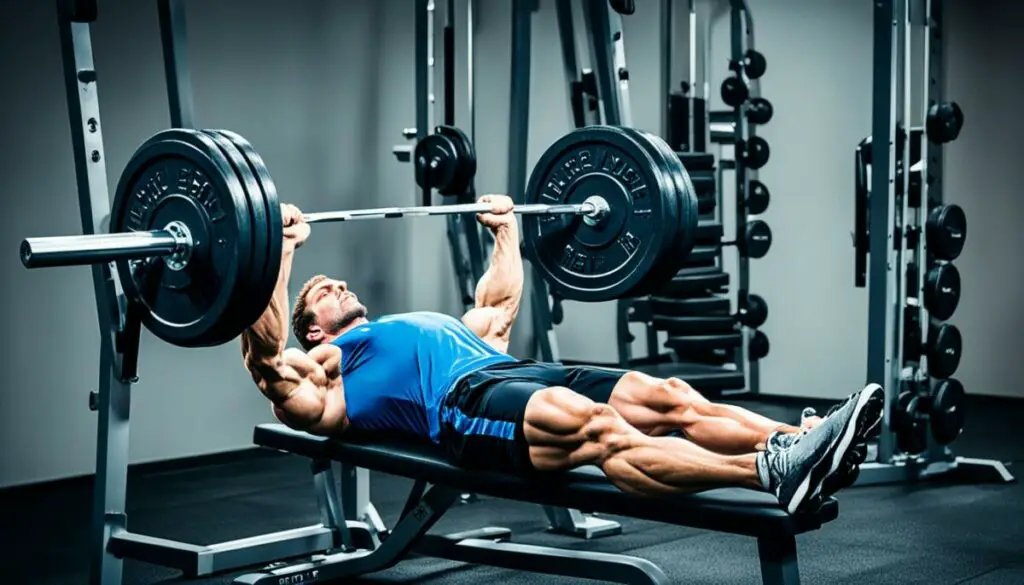
The incline barbell bench press, while effective for targeting the upper chest and shoulders, does come with some potential drawbacks. It’s important to be aware of these considerations to ensure safe and effective training.
Strain on the Shoulders
One of the main concerns when performing the incline barbell bench press is the strain it can place on the shoulders. The shoulder joint is vulnerable to injury, particularly when heavy weights are used or when incorrect form is employed. It’s vital to maintain proper shoulder alignment throughout the exercise and to gradually increase the weight to avoid unnecessary stress on the joint.
Muscle Imbalances
Another drawback of the incline barbell bench press is the potential for muscle imbalances. When using both hands on the same piece of equipment, the stronger side or muscle group may compensate for the weaker one. This can lead to muscular imbalances and a lack of symmetry in the chest and shoulder muscles. It’s important to address any muscle weaknesses or imbalances through targeted exercises and proper form.
Reducing the Risk of Injury
To minimize the risks associated with the incline barbell bench press, it’s crucial to incorporate warm-up exercises and maintain proper form throughout the movement. Warming up the shoulder and chest muscles before lifting can help prepare them for the intensity of the exercise. Additionally, focusing on a controlled and stable movement pattern, with a gradual increase in weights, can reduce the likelihood of injury.
Remember, safety should always be a top priority during any exercise. If you experience any pain or discomfort while performing the incline barbell bench press, it’s recommended to consult with a qualified fitness professional or healthcare provider.
| Drawbacks of Incline Barbell Bench Press | How to Address |
|---|---|
| Shoulder strain | Maintain proper form, gradually increase weight, and pay attention to shoulder alignment |
| Muscle imbalances | Target weaker muscles through specific exercises and ensure balanced training |
| Risk of injury | Incorporate warm-up exercises, use controlled movement, and consult a professional if needed |
Differences Between Incline Barbell Bench Press and Incline Dumbbell Press
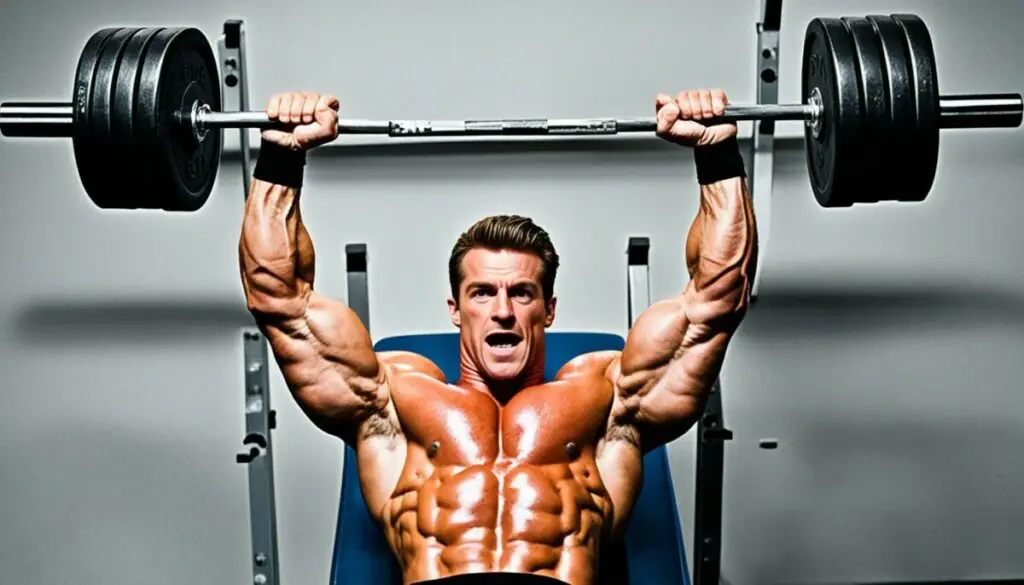
The incline barbell bench press and incline dumbbell press may seem similar, but they have distinct differences in terms of equipment used and muscle activation. These differences can impact your workout routine and the specific muscles targeted.
The Incline Barbell Bench Press
The incline barbell bench press is performed with a barbell and is known for its stability. The barbell allows you to lift heavier weights, making it a suitable exercise for building strength in the upper body.
Key Points:
- Offers stability and allows for heavier weights
- Targets the upper chest, shoulders, triceps, and deltoids
- Performed on an incline bench
- Requires proper form and setup to minimize the risk of injury
The Incline Dumbbell Press
The incline dumbbell press, on the other hand, involves using a pair of dumbbells. This exercise allows for more unilateral movement, giving you a greater range of motion and targeting the upper chest muscles more effectively.
Key Points:
- Allows for unilateral movement and a greater range of motion
- Places emphasis on the upper chest muscles
- Engages the shoulders and triceps as secondary muscles
- Involves lifting dumbbells while lying on an incline bench
Choosing between the incline barbell bench press and incline dumbbell press depends on your individual preferences, goals, and abilities. Consider your desired muscle activation, overall workout routine, and available equipment.
Table: Comparison of Incline Barbell Bench Press and Incline Dumbbell Press
| Exercise | Differences |
|---|---|
| Incline Barbell Bench Press | Offers stability and allows for heavier weights |
| Incline Dumbbell Press | Allows for unilateral movement and a greater range of motion |
Similarities Between Incline Barbell Bench Press and Incline Dumbbell Press
Despite their differences, the incline barbell bench press and incline dumbbell press have some striking similarities. Both exercises engage the chest muscles, shoulders, and triceps, leading to strength and muscle growth. They are multi-joint movements that stimulate the anterior flexors and are essential components of an upper body push workout. Both exercises require proper setup and technique for optimal results and to reduce the risk of injury.
The incline barbell bench press and incline dumbbell press share the following key similarities:
- Target Muscle Groups: Both exercises target the chest muscles, particularly the upper chest or pectoralis major, along with the shoulders (anterior deltoids) and triceps. This makes them effective chest exercises that contribute to overall upper body development.
- Multi-Joint Movements: Both exercises involve multiple joints and muscle groups, making them compound exercises that recruit various muscle fibers. This leads to improved strength, muscle activation, and overall muscle growth.
- Upper Body Push Movement: Both exercises fall under the category of upper body push movements, where the primary action is pushing resistance away from the body. This movement pattern is essential for developing upper body strength and power.
- Setup and Technique: Proper setup and technique are crucial for both the incline barbell bench press and incline dumbbell press. This includes positioning the body correctly, maintaining proper form, and using controlled motions throughout the exercise. Focusing on technique helps to maximize the benefits of these exercises and minimize the risk of injury.
By incorporating both the incline barbell bench press and incline dumbbell press into a comprehensive chest workout routine, individuals can target the chest muscles from different angles and stimulate muscle growth effectively.
👈Check out this image of a demonstration on how to perform the incline bench press correctly and enhance your chest workouts.
Technique Differences Between Incline Barbell Bench Press and Incline Dumbbell Press
The incline barbell bench press and incline dumbbell press may seem similar, but they differ in technique due to the equipment used. Let’s explore how these exercises vary and the specific requirements for proper form and muscle activation.
Barbell Press Technique:
The barbell press is a bilateral movement that involves stabilizing the bar and maintaining a specific bar path. Here’s a step-by-step guide to performing the incline barbell bench press:
- Lie down on a bench set at an incline angle.
- Grab the barbell with an overhand grip, slightly wider than shoulder-width apart.
- Unrack the barbell and position it directly above your upper chest.
- Lower the barbell towards your chest, maintaining control and keeping your elbows at a 45-degree angle.
- Pause briefly at the bottom, then press the barbell back up until your arms are fully extended.
The incline dumbbell press is a unilateral movement that requires independently guiding each dumbbell. Here’s a step-by-step guide to performing the incline dumbbell press:
- Position yourself on an incline bench with a dumbbell in each hand.
- Begin with your arms extended vertically above your chest, palms facing forward.
- Lower the dumbbells until your upper arms are parallel to the floor, keeping your elbows at a 45-degree angle.
- Pause briefly at the bottom, then press the dumbbells back up until your arms are fully extended.
It’s important to adhere to proper set up and positioning for both exercises to maximize their effectiveness and avoid injury.
Barbell Bench Press Variations
In addition to the incline barbell bench press, there are other variations of the barbell bench press that can be incorporated into a chest workout. These include the incline barbell bench press, which targets the upper chest, and the decline barbell bench press, which targets the lower chest. These variations can help diversify the training stimulus and promote overall chest development.
When it comes to chest exercises, the barbell bench press is a staple. It’s a compound movement that engages multiple muscle groups, including the pectoralis major, anterior deltoids, and triceps. By incorporating variations of the barbell bench press into your routine, you can target specific areas of the chest and challenge your muscles in different ways.
Incline Barbell Bench Press
The incline barbell bench press is a variation that focuses on the upper chest muscles. By adjusting the incline of the bench, you can increase the emphasis on the clavicular head of the pectoralis major. This variation helps develop a fuller and more defined upper chest.
“The incline barbell bench press is a great exercise for targeting the upper chest. By adjusting the incline of the bench, you can really isolate and work those muscles effectively.” – Fitness Trainer
Decline Barbell Bench Press
The decline barbell bench press is a variation that places more emphasis on the lower chest muscles. By adjusting the decline of the bench, you can effectively target the sternal head of the pectoralis major. This variation helps create depth and thickness in the lower chest area.
“The decline barbell bench press is a fantastic exercise for building strength and size in the lower chest. It’s a challenging variation that really engages the muscles in that area.” – Strength Coach
By incorporating these barbell bench press variations into your chest workout routine, you can ensure that you are targeting all areas of the chest for balanced development. It’s important to note that proper form and technique are essential to prevent injuries and maximize effectiveness. Start with a weight that allows you to maintain proper form and gradually increase the load as you progress.
Conclusion
In conclusion, when it comes to the incline barbell bench press versus the incline dumbbell press, there are distinct benefits and differences. Both exercises effectively target the upper chest and shoulders, helping to build strength and muscle. The choice between the two ultimately depends on individual preferences, goals, and abilities.
The incline barbell bench press offers more stability and the ability to lift heavier weights, making it a great option for those looking to maximize strength gains in the upper body. On the other hand, the incline dumbbell press allows for more unilateral movement and a greater range of motion, promoting muscle balance, symmetry, and engagement of the stabilizer muscles.
To achieve a well-rounded chest training routine, it is beneficial to incorporate a variety of chest exercises, including both barbell and dumbbell presses. By doing so, you can target different muscle fibers and stimulate further muscle growth. Consider incorporating both the incline barbell bench press and the incline dumbbell press in your workouts to reap the full benefits of each exercise.
FAQ
What is the difference between the incline barbell bench press and incline dumbbell press?
The incline barbell bench press is performed with a barbell, offering more stability and the ability to lift heavier weights. The incline dumbbell press is performed with dumbbells, allowing for more unilateral movement and a greater range of motion.
What muscles do the incline dumbbell press target?
The incline dumbbell press primarily targets the pectoralis major, or upper chest muscle, but also engages the posterior deltoids, triceps, and anterior deltoids to a lesser extent.
What muscles do the incline barbell bench press target?
The incline barbell bench press primarily targets the pectoralis major, but also works the anterior deltoids, triceps, and posterior deltoids.
What are the benefits of the incline dumbbell press?
The incline dumbbell press allows for greater muscle activation in the upper chest, promotes muscular balance and symmetry, engages the core and stabilizer muscles, and offers a greater range of motion compared to the barbell version.
What are the benefits of the incline barbell bench press?
The incline barbell bench press allows for heavier weights, leading to greater strength gains in the upper body, targets both the chest and shoulders, and helps develop overall upper body strength and stability.
What are the drawbacks of the incline dumbbell press?
The incline dumbbell press can be harder to set up compared to the barbell press, requires a larger variety of dumbbells for progression, and may lead to muscle imbalances if not balanced with proper rest and recovery.
What are the drawbacks of the incline barbell bench press?
The incline barbell bench press can strain the shoulders if performed with heavy weights or incorrect form, and may result in muscle imbalances if one side or muscle group compensates for the weaker one.
What are the differences between the incline barbell bench press and incline dumbbell press?
The incline barbell bench press offers more stability and the ability to lift heavier weights, while the incline dumbbell press allows for more unilateral movement, a greater range of motion, and more focus on the upper chest.
What are the similarities between the incline barbell bench press and incline dumbbell press?
Both exercises engage the chest muscles, shoulders, and triceps, leading to strength and muscle growth. They are multi-joint movements that are essential components of an upper body push workout.
What are the technique differences between the incline barbell bench press and incline dumbbell press?
The incline barbell bench press is a bilateral movement that requires stabilizing the bar and maintaining a specific bar path. The incline dumbbell press is a unilateral movement that requires independently guiding each dumbbell.
What are some variations of the barbell bench press?
Variations of the barbell bench press include the incline barbell bench press, which targets the upper chest, and the decline barbell bench press, which targets the lower chest.









